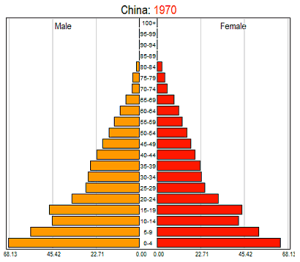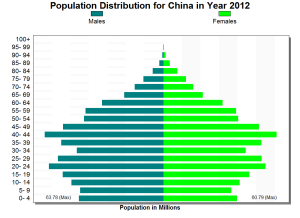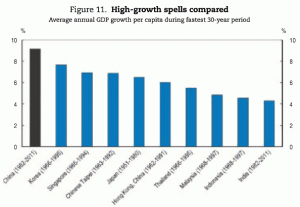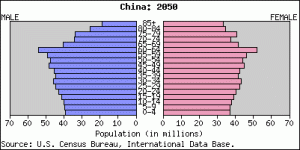Headlines around the world have often captured the economic rise of China in vivid details: its ever-expanding industrial output, its rapid increase in the amount of mega-corporations that threatened to upset the status quo (think of Lenovo, Huawei, and Alibaba), and above all, its mass market of consumers, who are only beginning to consume in quantities not hereto imagined. But in this blog post, I want to focus on another core aspect of its economy that perhaps is more crucial for China’s economy in the long run: its labor force.
Mao had famously said something to effect that the more populous a nation is, the more strength that it has. Initially, what he meant to suggest is that because China is so populous, it is able to survive a nuclear confrontation or any other national catastrophes that could have easily crippled other nations. And for a long time, China’s demographic growth had been remarkable, seeming to heed his words, growing from 543 million in 1950 to 814 million in 1970 (see graphs) , wh
, wh en the median age in the country is only 20. Of course, many nations have growth much fast than this, but for a nation the size of China, the impacts are quite noticeable. However, simply by adding raw number of people to the economy does not suggest that the economy has been growing as well. In fact, in certain years (see graph 2), the economy contracted quite severely during the Mao era. Overall the pace of growth is only from the duration of the period from to .
en the median age in the country is only 20. Of course, many nations have growth much fast than this, but for a nation the size of China, the impacts are quite noticeable. However, simply by adding raw number of people to the economy does not suggest that the economy has been growing as well. In fact, in certain years (see graph 2), the economy contracted quite severely during the Mao era. Overall the pace of growth is only from the duration of the period from to .
This lack of growth during the Mao era can be contrasted to the beginning of the Deng Xiaoping era, where following a series of liberalizations, the economy had become more robust and dynamic, growing at over 9% percent each year for the period from 1979-2014 . The implementation of economic reforms in the form of special economic zones, etc, helped to propel the economy into new economic heights. Another factor that propels this growth that is often neglected is the so called “demographic dividends”.
. The implementation of economic reforms in the form of special economic zones, etc, helped to propel the economy into new economic heights. Another factor that propels this growth that is often neglected is the so called “demographic dividends”.
The past 35 years had witnessed what is often termed as a demographic dividend, whereby the nation have both low old-age population and low younger generation. This period in a nation’s history (particularly in the case of East Asia, where this effect is the most pronounced) is characterized by high economic growth. For instance, look at the demographic pyramid for 2012. The majority of the population is of working age and contributing to national economic output, at the same time, less economic resources are required to take care the elderly (in the form of healthcare, etc), and less is needed to take care of the young (in the form of education, etc). This saving of resources freed up more capital and labor for the economy, and enabled the phenomenal economic growth that we came to associate with the East Asian countries.
However, one can readily see that there is a catch to this scenario. Population all eventually age and the working population today is the retirees of tomorrow. With a rising share of the elderly, the demographic boom will quickly turn into a demographic bust. In China’s case, this will become an acute problem (see graph) . Decades from now, when 20, 30 or even 40% of the population is over the age of 65, what do we do then? Economically, the burden will be ever greater on the central government to provide for the elderly, increasing tax burdens on already a smaller working age population. If there is a lesson from the Japanese experience for China, it’s that population is at the center of any comprehensive national development strategy. Failure to take into account the demographic factor will have catastrophic consequences.
. Decades from now, when 20, 30 or even 40% of the population is over the age of 65, what do we do then? Economically, the burden will be ever greater on the central government to provide for the elderly, increasing tax burdens on already a smaller working age population. If there is a lesson from the Japanese experience for China, it’s that population is at the center of any comprehensive national development strategy. Failure to take into account the demographic factor will have catastrophic consequences.
